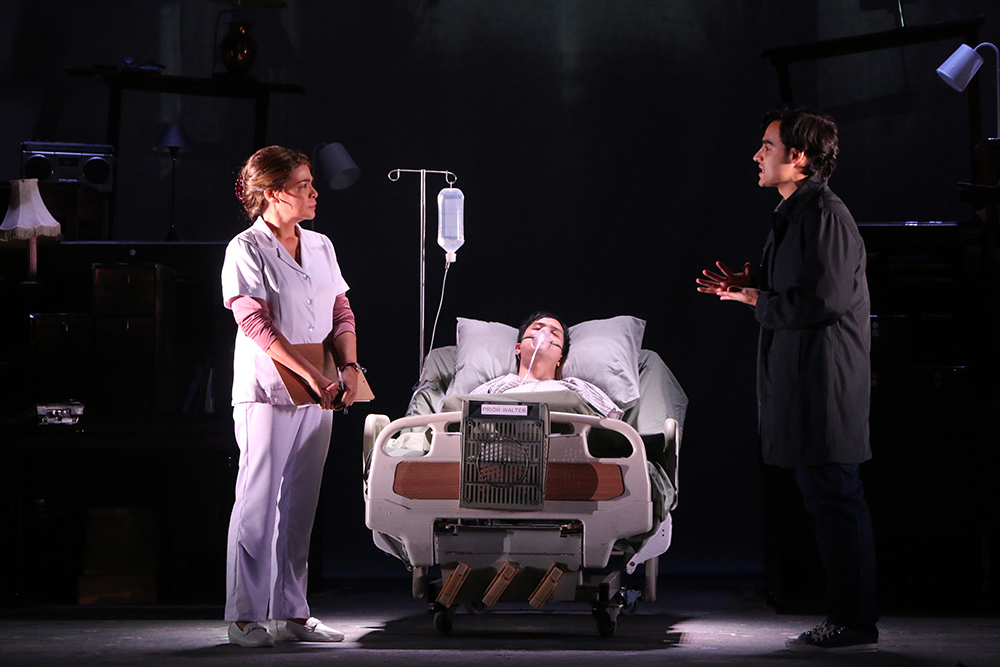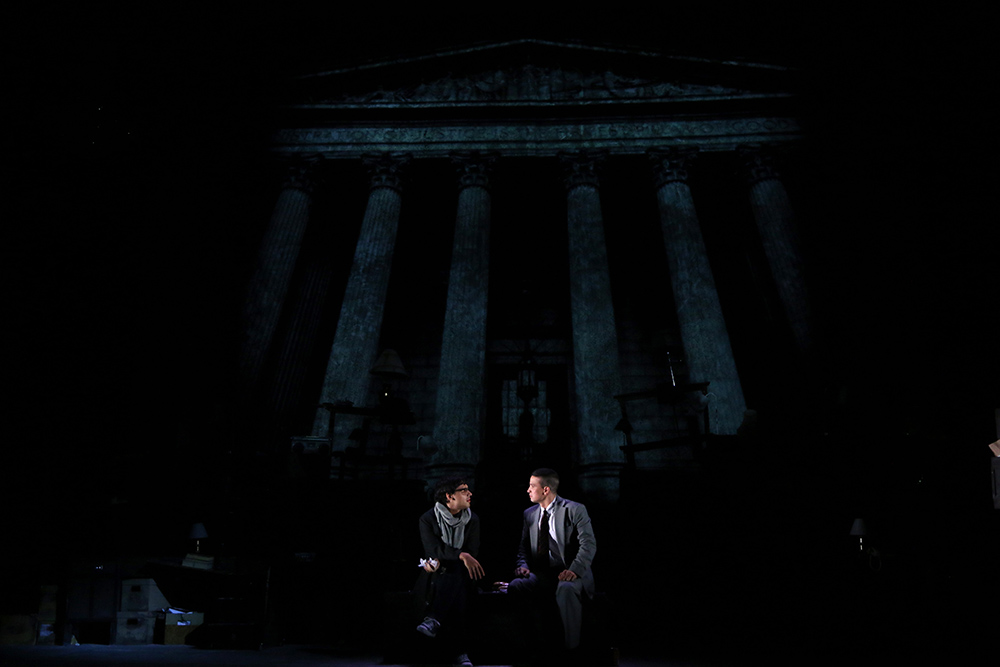Bobby Garcia’s Manila staging of Tony Kushner’s epic play Angels in America is, in many ways, a brave undertaking. For one, it’s the theater director’s attempt to breathe life to one of the winingest theater pieces ever written—pocketing the Pulitzer Prize for Drama, not to mention 11 nods from the prestigious Tony Awards. Then there’s the heavy breadth of societal and even moral issues that characterize the play—a dialogue that resonates with the audiences up to this day.

In this season’s run, coinciding with Atlantis Theatrical Entertainment Group’s 20th anniversary, Garcia crafts an intricately-woven web of characters whose lives intertwine in a narrative about the human experience—with hard-hitting insights on justice, identity, society, love, life and of course, death. Highlighting the human condition–with its characters in various states and forms of decay.
The renowned theater genius remakes the stage adaptation of the Kushner opus, which he debuted in 1995 in a full seven-hour production. This time, Garcia opts to slice the two-part play and premieres the first part The Millennium Approaches running for over three hours. The second part, Perestroika, on the other hand, will be staged next year—to draw the conclusion to the narrative.

The Millennium Approaches zooms in on then “un-talked” about stories on HIV and AIDS set in mid-’80s America as the crisis gains momentum. We see Prior Walter (Topper Fabregas) and his revelation to his lover, Louis Ironson (Nelsito Gomez), of the disease right at his grandmother’s funeral. On the other end of the spectrum, we meet, Joe Pitt (Markki Stroem), a conservative Mormon and a Republican, who faces a dilemma of advancing his career, uprooting himself to Washington in an offer laid down by his mentor Roy Cohn (Art Acuna), a man who loves using power as currency. This ambition is opposed by his obligation to stay for his wife, the Valium-popping Harper (Angeli Bayani).
Parallels Collide

In a collision of worlds, their parallel lives somewhat intertwine after Roy finds out he has also contracted the disease—which he fervently passed on for liver cancer to preserve whatever reputation he has left. Joe, by happenstance, then meets Louis who works in the same building and becomes the instigator that would fan the fire of his doubt on his sexuality, which he later on confesses to. Coming out to his wife, and then to his mother (Cherie Gil) over the phone proved to be tumultuous. The latter would then sell their Salt Lake City home to be with her son. Prior, on the other hand, finds comfort from his ex-drag queen and nurse friend, Belize (Andoy Ranay) while, in an absurd twist of fate, gets in contact with Harper as they both enter surreal dreams and delirium. Not only this, Prior gets visited by ghosts of ancestors past and hears the voice of an Angel (Pinky Amador), the messenger who hails him a prophet.

In three hour-long acts, the play brings lengthy discussions of the many social issues that each of its characters represent. Remaining faithful to the Kushner play, its lines are essentially a dialogue not just of the characters among one another but were thrown out as provocative thought pieces left for the audiences to contemplate on, about issues involving love and abandonment, discrimination and race, fear and pain, and power and deceit.

The Millennium Approaches is a searing critique of the human experience, with dialogues that straddle between the lines of truth and fantasy, the real from the surreal, dreams versus delusions—all in an attempt to shed even the slightest light on the grand overarching concept of life and death in a world of many forms of injustices. Who gets to decide who lives? Who gets to decide who has power over the other not just in race, gender, and social class?
It has to be remembered that the narrative harks back on pre-AIDS awareness America—the lesser known ‘80s America but focuses the attention not the fun fashion and hits that characterize the era. It is the time of Reagan’s hard-edged, macho rule, when a lot of these issues get brushed under the rug. The convoluted, intertwining narratives of the said characters are but a microcosm of the tumultuous, uncertain socio-political climate of the time.
An achievement

With Garcia at the helm, The Millennium Approaches is definitely an achievement. With minimal stage design changes, the fast-paced back and forth on the play’s milieu is made possible by Faust Peneyra’s set design, complemented by video projections of G.A. Fallarme. Jonjon Villareal and his precise light designs help transport viewers into the ever-changing trips to the real and the dreams as well as the haunting score of Louise Ybanez-Javier.

In the end, the roster of actors makes the play what it is. It renders the services of a small group of actors—topnotch in their own rights—in a round-robin of roles making its grand intentions intimate and deeply affecting. In many instances, the lengthy discussions may appear discomforting—each line packed with an ocean of opinions and stance on many social issues. But the actors are as effective in their loud, breath-taking scenes as they are in the quiet ones—mark of true maturity.
Gil, Acuna, and Bayani proved their mettle as actors across many platforms and their take on the now-iconic characters in The Millennium Approaches is nothing less of a masterpiece. Ranay and Amador are also good reinforcements for their roles, along with young ingenues Stroem and Gomez.

But it is Fabregas as the forlorn AIDS victim battling not only his disease but also his fears, and his sanity that garnered the most responses from the audience. Sure, his character was written to be loved by the audiences but it is his clear, layered portrayal that made many root for him and in fact, anticipate his re-entry onstage–be it in one of his more snarky moods, or in his sorry, ailing state. His connection to his character and to his audience is to be lauded for and is actually what made Angels in America an impressive feat.
Angels in America: The Millennium Approaches stages its last few shows until April 7, 2019 at the Carlos P. Romulo Auditorium, RCBC Plaza, Makati. For tickets, visit www.ticketworld.com.ph. Production contains strong language and mature content. Due to its subject matter, this show is strongly recommended to ages 17 years old and above.


